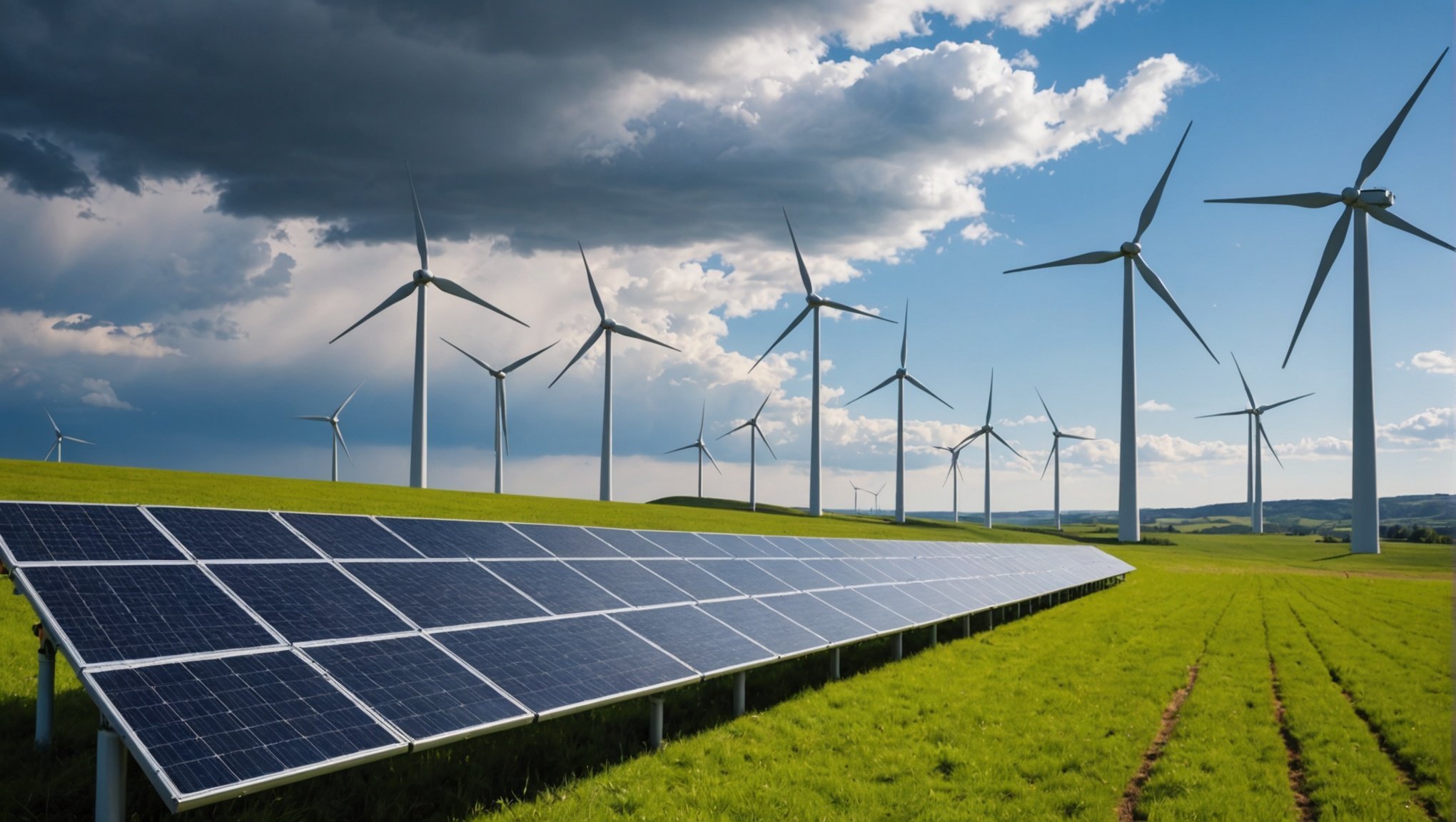As the world steers towards greener energy solutions, the renewable energy sector is undergoing rapid transformation. One of the critical tools driving this evolution is Artificial Intelligence (AI). The question of how AI can be used to improve efficiency in renewable energy management is not only pertinent but also essential for the industry’s future sustainability. This article delves into the multifaceted ways in which AI can revolutionize the management and optimization of renewable energy sources.
Predictive Maintenance in Renewable Energy Systems
In the complex machinery involved in renewable energy systems, predictive maintenance stands out as a crucial application of AI. Traditional maintenance schedules often lead to unnecessary downtime or unexpected breakdowns, both of which can be costly.
Also read : What are the steps to create an AI-powered system for personalized learning in education?
AI algorithms can analyze vast amounts of data from sensors embedded in wind turbines, solar panels, and other renewable energy equipment. This data can identify patterns that point to potential failures before they occur. By leveraging machine learning and historical data, AI can predict when a component is likely to fail and suggest preemptive replacement or repair.
Imagine a wind farm with hundreds of turbines. Manual monitoring would be an enormous task, but with AI, each turbine can be continuously monitored for vibrations, temperature fluctuations, and other indicators of wear and tear. When anomalies are detected, maintenance teams can be dispatched to address issues before they cause a complete breakdown. This not only maximizes uptime but also extends the lifespan of the equipment.
Have you seen this : How can AI be used to enhance the accuracy of financial trading algorithms?
The result is a more efficient and cost-effective maintenance strategy, reducing both operational costs and the risk of energy production halts. Ultimately, predictive maintenance driven by AI ensures a more reliable renewable energy supply.
Optimization of Energy Production
AI’s role in optimizing energy production is another game-changer for renewable energy management. Renewable energy sources such as wind, solar, and hydro are inherently variable. Their output depends on factors like weather conditions, time of day, and geographical location. AI can help manage these variables more effectively.
For instance, AI models can forecast weather patterns with high accuracy, allowing energy producers to anticipate changes in wind speed or solar irradiance. This information is invaluable for optimizing the operation of wind turbines and solar panels. For example, wind turbines can be adjusted in real-time to capture maximum wind energy based on predictive analytics.
Moreover, AI can manage the balance between supply and demand. During periods of high energy production, surplus energy can be stored using battery storage systems or fed into the grid. Conversely, during low production periods, stored energy can be released to ensure a continuous supply. This load balancing capability is essential for maintaining grid stability and preventing energy shortages.
AI-driven optimization also extends to hydroelectric power. Machine learning algorithms can analyze water flow data to manage the operation of hydroelectric dams more efficiently, ensuring that water resources are used optimally.
The integration of AI into energy production processes ensures that renewable energy resources are utilized to their full potential, reducing waste and enhancing overall efficiency.
Enhancing Grid Management and Stability
The introduction of AI into grid management is a critical advancement in the renewable energy sector. Traditional energy grids were designed for consistent output from fossil fuel-based power plants. However, the variability of renewable energy sources requires a more dynamic approach to grid management.
AI can help by providing real-time monitoring and control of energy flows within the grid. This is particularly crucial in smart grids, where energy from diverse sources such as wind, solar, and traditional power plants needs to be seamlessly integrated.
One of the primary challenges in grid management is maintaining the balance between energy supply and consumption. AI algorithms can analyze consumption patterns and predict future demands. By doing so, they can optimize energy distribution, ensuring that renewable energy sources are effectively utilized while minimizing reliance on fossil fuels.
Moreover, AI can improve grid stability by identifying and mitigating potential disruptions. For instance, if a sudden drop in wind speed leads to reduced energy production, AI can quickly adjust the energy flow from other sources or tap into stored energy reserves. This proactive approach minimizes the risk of blackouts and enhances the grid’s resilience.
AI also plays a pivotal role in the integration of distributed energy resources (DERs) such as rooftop solar panels and small wind turbines. These DERs can be challenging to manage due to their decentralized nature. AI can aggregate data from numerous DERs, providing a comprehensive view of their collective output and enabling efficient grid management.
By enhancing grid management and stability, AI contributes to a more reliable and resilient energy infrastructure, facilitating the widespread adoption of renewable energy.
Smart Energy Storage Solutions
Energy storage is a critical component of renewable energy management, addressing the intermittent nature of renewable sources. Smart energy storage solutions empowered by AI are transforming how energy is stored and utilized.
Traditional energy storage systems often operate on fixed schedules, leading to inefficiencies. AI can optimize energy storage by predicting energy production and consumption patterns. For example, AI can determine the optimal times to charge and discharge batteries, ensuring that stored energy is available when needed most.
AI can also facilitate demand response strategies. During peak demand periods, AI algorithms can analyze real-time data to decide when to release stored energy, reducing the strain on the grid. Conversely, during periods of low demand, excess energy can be stored for future use. This dynamic approach minimizes energy wastage and enhances overall efficiency.
In addition to optimizing existing storage systems, AI can also drive innovation in new storage technologies. Machine learning models can analyze data from various storage methods, such as lithium-ion batteries, pumped hydro storage, and emerging technologies like flow batteries. This analysis can identify the most efficient and cost-effective storage solutions for different applications.
Moreover, AI can enable the integration of vehicle-to-grid (V2G) technology. Electric vehicles (EVs) equipped with AI-driven systems can act as mobile energy storage units. When connected to the grid, these EVs can store excess energy and release it during peak demand periods, providing an additional layer of flexibility and efficiency to the energy system.
By harnessing the power of AI, smart energy storage solutions ensure that renewable energy is readily available when needed, addressing one of the key challenges in renewable energy management.
Streamlining Energy Trading and Market Operations
The integration of AI in energy trading and market operations is revolutionizing how renewable energy is bought and sold. Traditional energy markets are often slow and cumbersome, with transactions relying on manual processes and outdated systems. AI brings speed, efficiency, and transparency to these markets.
AI-driven platforms can facilitate real-time energy trading, allowing producers and consumers to buy and sell energy based on current market conditions. For example, AI algorithms can analyze market trends, weather forecasts, and energy production data to predict price fluctuations. This information enables energy producers to sell their output at optimal times, maximizing revenue.
Moreover, AI can enable peer-to-peer (P2P) energy trading. In a P2P energy market, individuals and businesses with excess energy from renewable sources can sell it directly to others. AI platforms can match buyers and sellers, handle transactions, and ensure fair pricing. This decentralized approach promotes the use of renewable energy and empowers consumers.
AI also enhances market transparency and reduces the risk of fraud. Advanced algorithms can detect anomalies in trading patterns, flagging suspicious activities for further investigation. This ensures that energy markets operate fairly and efficiently.
In addition to trading, AI can optimize market operations by automating routine tasks. For instance, AI-powered systems can manage scheduling and dispatching of energy resources, ensuring that energy is delivered where and when it’s needed. This reduces administrative burdens and improves overall market efficiency.
By streamlining energy trading and market operations, AI fosters a more dynamic and responsive energy market, facilitating the integration of renewable energy sources and promoting a sustainable energy future.
AI is undeniably reshaping the landscape of renewable energy management, offering solutions that enhance efficiency, reliability, and sustainability. From predictive maintenance and optimization of energy production to enhancing grid management, smart energy storage, and streamlining energy trading, AI provides the tools necessary to harness the full potential of renewable energy sources.
Incorporating AI into renewable energy management not only addresses current challenges but also paves the way for future innovations. As we continue to explore and implement AI-driven solutions, the renewable energy sector stands poised to lead the charge towards a greener, more sustainable world. By leveraging the power of AI, we can ensure that renewable energy is not only a viable alternative but the cornerstone of our global energy strategy.











